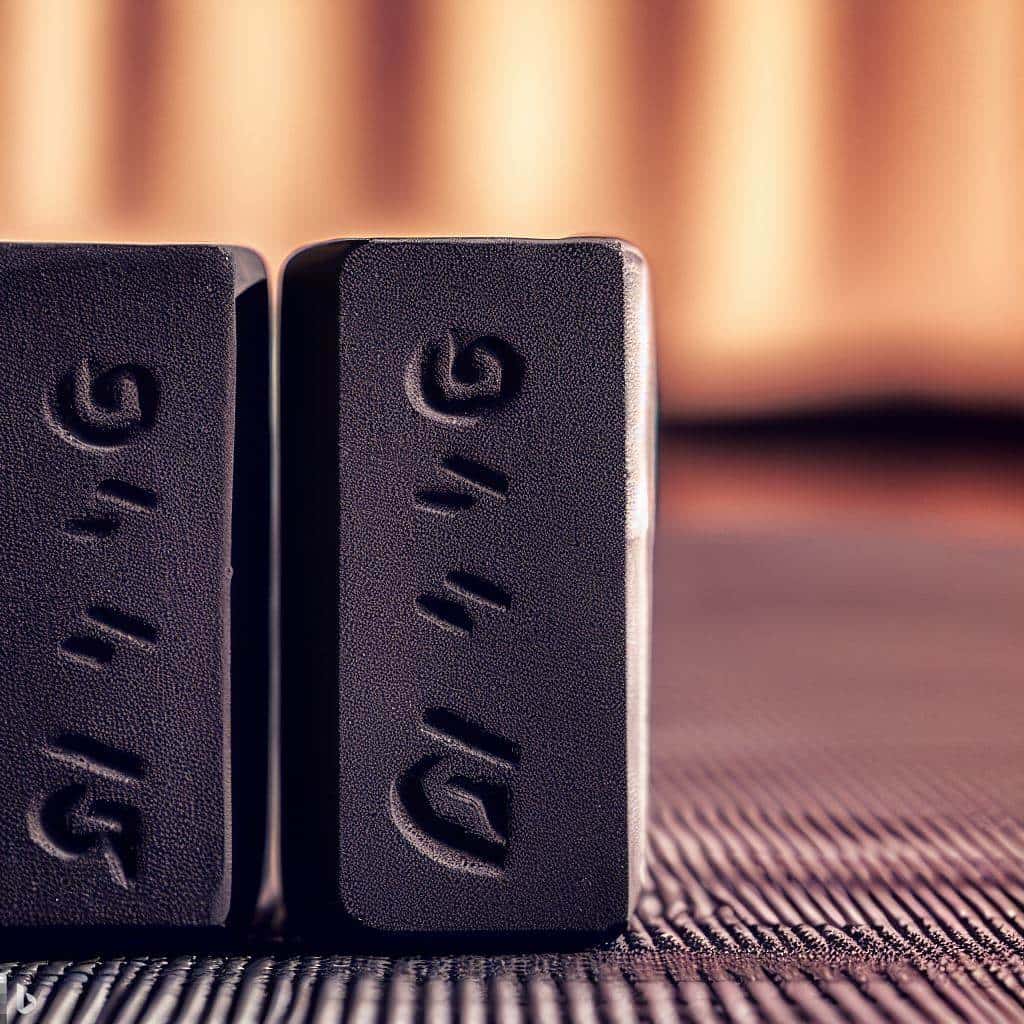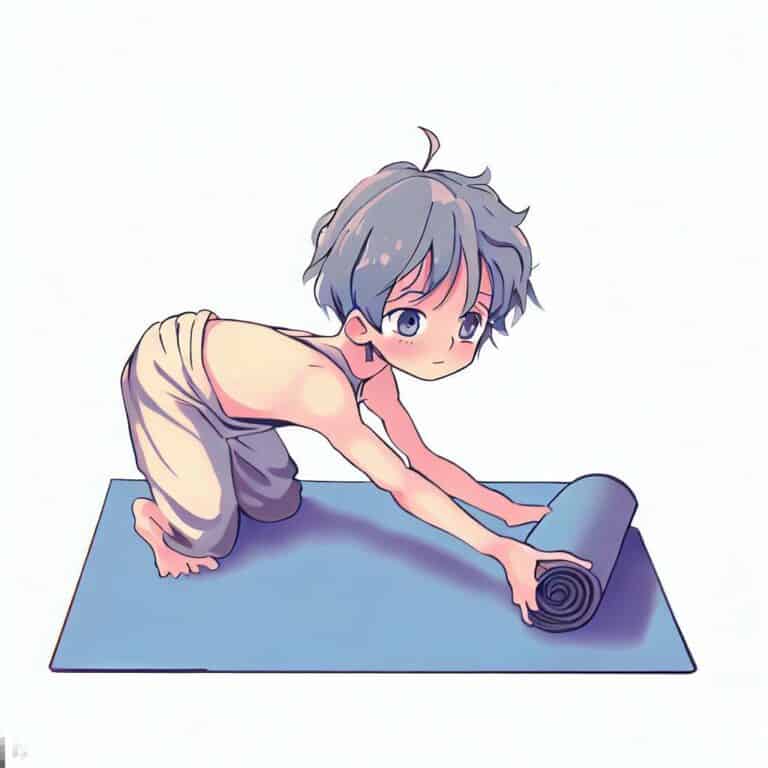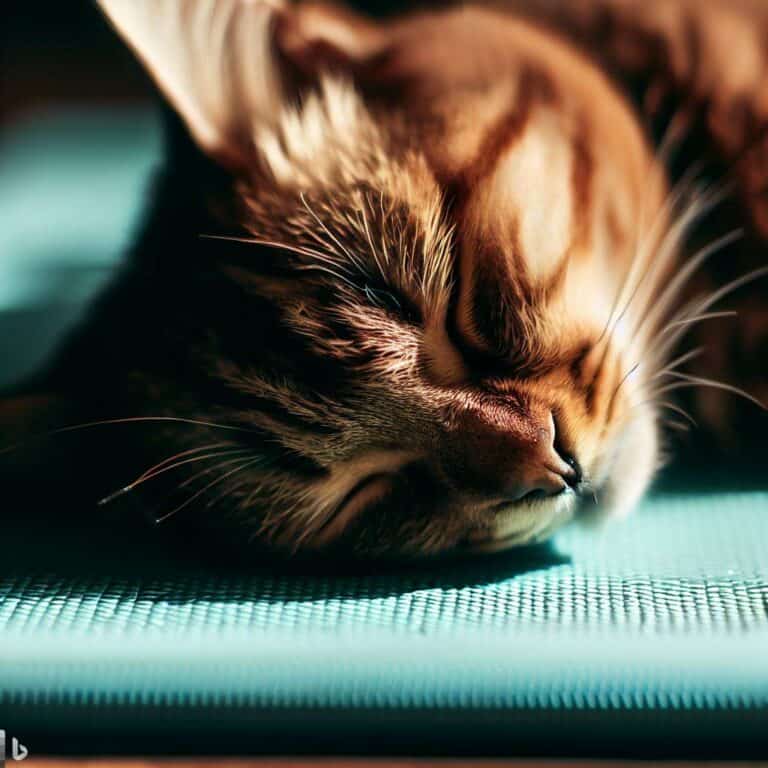Om Your Way to Sustainability: The Benefits of Natural Rubber Yoga Blocks

The Natural Rubber Yoga Block: A Yogi’s Best Friend
As a dedicated yogi, you know the importance of having the right props to support and enhance your practice. One such prop that has gained immense popularity among the yoga community is the natural rubber yoga block.
This article focuses on the choice of yoga block material. For those of you looking for the more comprehensive guide to choosing yoga blocks, I suggest this article Block by Block: A Comprehensive Guide to Choosing the Perfect Yoga Block.
So, what exactly sets this block apart from its foam or cork counterparts? Let’s take a closer look.
- Using a natural rubber yoga block can enhance your practice by providing stability, support, and comfort during challenging poses.
- When choosing the right one for you, consider factors like size, shape, and brand reputation to find a product that enhances your practice while supporting ethical manufacturing practices.
- With its eco-consciousness and durability benefits over synthetic options, investing in a natural rubber yoga block is an investment not just in yourself but also our planet’s health.
Why Natural Rubber Yoga Blocks are Popular Among Yogis
Natural rubber yoga blocks have become increasingly popular in recent years due to their eco-friendliness, non-slip surface, soft-yet-supportive density, and durability. For yogis who prioritize sustainability and environmentally conscious practices on and off the mat, natural rubber blocks are a great choice. Unlike foam blocks which are typically made from synthetic materials that can harm the environment, natural rubber blocks are made from sustainable and biodegradable materials.
Non-slip surfaces on yoga props like mats and blocks can make all the difference during a sweaty practice – no one wants to worry about slipping out of a pose or losing their footing in downward dog. Fortunately, natural rubber provides superior traction compared to other block materials like cork or foam.
In addition to being eco-friendly and providing excellent grip, natural rubber also has a unique density that makes it both soft and supportive at the same time. This means that when used as support during yoga poses, it won’t be too hard or uncomfortable but will still provide enough firmness to help with proper alignment.
Durability is an important factor for those who use their props frequently. The last thing anyone wants is to invest in new props every few months because they have worn out too quickly – which is where natural rubber shines again!
It is resistant to wear and tear making it an ideal choice for long-term use. With all of these benefits, it’s no wonder that more and more yogis are turning to natural rubber yoga blocks to support their practice.
Eco-Friendly and Sustainable Material
When it comes to choosing yoga blocks, natural rubber is an excellent choice because it is eco-friendly and sustainable. Natural rubber is derived from the sap of rubber trees that are found in tropical regions such as Southeast Asia and West Africa.
The process of extracting the sap from these trees does not harm them, making natural rubber a renewable resource. In addition to being renewable, natural rubber yoga blocks are also produced sustainably.
The production process involves minimal energy consumption and does not emit harmful chemicals or pollutants into the environment. This means that by using a natural rubber yoga block, you can reduce your carbon footprint and support sustainable practices in the manufacturing industry.
Non-Slip Surface for Stability
One of the standout benefits of using a natural rubber yoga block is its non-slip surface. The texture of natural rubber provides excellent traction that prevents slipping during yoga poses. This feature can enhance balance and stability, which is especially important for beginners who may struggle with maintaining proper form.
Natural rubber’s non-slip surface also makes it an ideal choice for those who practice hot yoga or other forms of high-intensity exercise where sweating is common. Because the surface remains slip-resistant even when wet, you can focus on your practice without worrying about losing your grip on your block.
Soft yet Supportive Density
Another key benefit of using a natural rubber yoga block is its soft yet supportive density. When compared to other materials such as foam or cork, natural rubber provides more support without being too hard or uncomfortable. This makes it easier to maintain proper alignment during poses while still providing enough cushioning for comfort.
The density also allows for versatility in how you use your block during practice. For example, if you need additional support in a particular pose, you can position the block horizontally or vertically depending on what feels most comfortable.
Durable and Long-Lasting
Natural rubber is an extremely durable material, making it a long-lasting choice for yoga blocks. Unlike foam blocks that may become compressed or lose their shape over time, natural rubber maintains its structure even through frequent use.
This means that you can invest in a high-quality natural rubber yoga block and expect it to last for years. In addition to being durable, natural rubber’s longevity makes it cost-effective in the long run.
While the initial cost may be higher than other materials, the fact that you won’t need to replace your block as frequently means you’ll save money in the long term. Plus, by choosing a long-lasting product, you’re reducing waste and contributing to a more sustainable future for our planet.
How to Choose the Right Natural Rubber Yoga Block
Size and Shape Considerations
When choosing a natural rubber yoga block, it is essential to consider the size and shape that will be the most comfortable for your body type and practice. While most blocks come in standard sizes, there are also larger or smaller options available. For beginners or those with limited flexibility, a larger size may provide more support during poses.
On the other hand, experienced yogis may prefer a smaller block that allows for greater mobility and versatility. Additionally, some blocks come in unique shapes like wedges or arcs that can help with specific poses or provide more variety in your practice.
Brand Reputation and Quality Assurance
Not all natural rubber yoga blocks are created equal. It’s crucial to research different brands before making a purchase to ensure you’re investing in a quality product that will last. Look for companies with sustainable sourcing and production practices, as well as those who prioritize eco-consciousness in their products’ design.
Check reviews from other yogis about durability and texture to ensure you’re getting a block that will meet your needs. Investing in a high-quality natural rubber yoga block not only ensures longevity but also supports companies committed to ethical practices from start to finish.
Conclusion
Using a natural rubber yoga block can enhance your practice by providing stability, support, and comfort during challenging poses. When choosing the right one for you, consider factors like size, shape, and brand reputation to find a product that enhances your practice while supporting ethical manufacturing practices.
With its eco-consciousness and durability benefits over synthetic options, investing in a natural rubber yoga block is an investment not just in yourself but also our planet’s health. Happy practicing!
More reading?
This article is part of a series of articles on the topic of choosing the perfect yoga block. Other articles in this series include:
- Types of yoga blocks: Which one is right for you?
- Block It Out: A Comprehensive Comparison of Cork and Foam Yoga Blocks
- Finding Your Perfect Fit: A Comprehensive Guide to Yoga Block Sizes
- A Guide to Choosing the Perfect Shape Yoga Block for Your Practice




